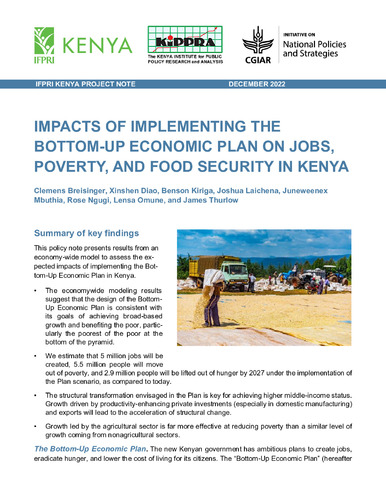Impacts of implementing the bottom-up economic plan of jobs, poverty, and food security in Kenya
Abstract
This policy note presents results from an economy-wide model to assess the expected impacts of implementing the Bottom-Up Economic Plan in Kenya.
• The economywide modeling results suggest that the design of the Bottom-Up Economic Plan is consistent with its goals of achieving broad-based growth and benefiting the poor, particularly the poorest of the poor at the bottom of the pyramid.
• We estimate that 5 million jobs will be created, 5.5 million people will move out of poverty, and 2.9 million people will be lifted out of hunger by 2027 under the implementation of the Plan scenario, as compared to today.
• The structural transformation envisaged in the Plan is key for achieving higher middle-income status. Growth driven by productivity-enhancing private investments (especially in domestic manufacturing) and exports will lead to the acceleration of structural change.
• Growth led by the agricultural sector is far more effective at reducing poverty than a similar level of growth coming from nonagricultural sectors.

